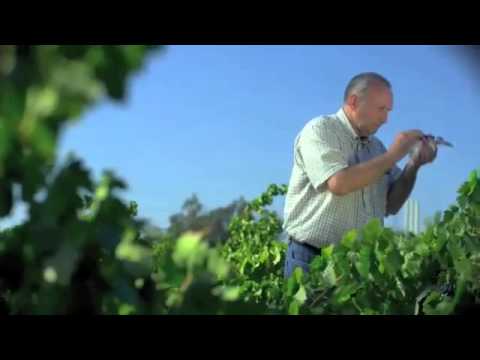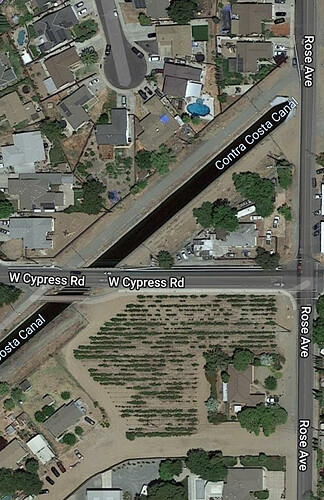The following is a deep-dive exploring the vineyards owned or farmed by the late Mr Dwight Meadows of Oakley, CA. This effort was inspired by a tasting note asserting that a 32-year-old bottle of Thomas Coyne “Contra Costa” Mourvèdre was not only sound, but absolutely delicious!
For many years, the late Dwight Meadows sold grapes to Thomas Coyne Winery. Over the years, Rosenblum Cellars, Cline Cellars, and Rock Wall Wine Company also purchased fruit from the properties owned or farmed by the Meadows family.
According to the CoCo-Fermented blog, Dwight Meadows’ Diablo Vista Vineyards company tended at least 6 different vineyards across eastern Contra Costa:
· “Jesse’s Vineyard” (401 Laurel) - 6th generation area grower Joe Duarte’s considerable vineyard holdings included a one-acre block of the larger “Duarte Vineyard” called “Jesse’s Vineyard”, named after Dwight’s father Jesse Meadows, who passed away about 3 years after Dwight. Almost all of the original “Duarte Vineyard” at the SE corner of Laurel Road and Rose Avenue has been transformed into residential properties.
· “Cuti Vineyard”: A younger, trellised planting - located at 4449 Rose Avenue - was established in the early 1990s. It is mentioned briefly in this article. A business was organized under this name for a short time.
· “Carla’s Vineyard” named after Dwight Meadows’ wife, Carla Cutino-Meadows. The vineyard was located to the East of the “Evangehlo Vyd” on E 18th Street, in Antioch. The +100-year-old planting was uprooted piecemeal to make space for a K-Mart and its parking lot, which was shuttered some years ago.
Rosenblum Cellars YouTube video:
“Carla’s Vineyard”
November 8, 2012
· “Vineyard on Live Oak Rd” - I do not know which specific vineyard parcel on Live Oak was farmed by Meadows. I do not believe he owned the property, but was contracted to tend to it.
· “Trilogy at the Vineyards” - a much newer planting, this senior residential community in Brentwood includes a commercial vineyard. At one point, Rosenblum Cellars took part in discussions to move the bulk of its operations from Alameda to this site. That plan fell through.
A July 25, 2018, “Contra Costa Wine Heritage” thread post lists Antioch and Oakley’s most influential grape-growing families. Following the passing of several important growers, the community’s multigenerational farming traditions are falling by the wayside.
*** EDIT ***
Diablo Vista Vineyards, LLC continues to operate. A PPP loan was issued to this business (NAICS code 312130 - wine, grape-growing) in 2021.
Dwight & Carla’s son Aaron Meadows now runs the company, though he primarily works in land sales, property management, and construction through Cutino’s Incorporated and A. Meadows Construction, Inc.
Co-Cofermented Blog
“IGRO-ZIN”
October, 2011
“…‘Carla’s Vineyard’, located over by the Kmart and named for his wife, is another site he tends. He also looks after a 37-acre vineyard, planted two-thirds to grapes and a third to olives, and located at Trilogy, a 55-and-older residential community that offers dozens of lifestyle options including membership in a winemaking club that uses the on-site vines. There’s a 5-acre piece over on Live Oak that he manages for an individual whose dream of a ‘ranchette’ went sour when he couldn’t keep up with the weeds and overgrowth. He used to farm 40 acres in nearby Knightsen, but the boron in the water was too much to battle…".
SF Gate
“Liquid Gold: Grape Vines Keeping Oakley Green”
by John King
April 27, 1999
“…[From Highway 4,] when you swing onto Rose Avenue, there’s a surprise tucked behind the modest houses: young grape vines. Acres of them. Staked and trellised, 5,600 long thin Petite Sirah vines six months away from their first commercial harvest.”
“…[Dwight Meadows] also bought land, 15 acres where he and Carla could build their dream house. It’s a spacious spread with enormous rear windows that look down on a field of stumpy low-growing vines planted 80 years ago.”
In Oakley, most of the Duarte family’s viticultural land on Laurel Ave recently was turned into a gated residential community.
Co-Cofermented Blog
“Another Mystery Solved: Jesse’s Vineyard”
September 26, 2010
"The ‘Duarte Vineyard’ story is one that’s being retold a lot in Oakley. According to Tom Del Barba, Joe Duarte had been farming the land for years, when local developer Seeno Homes offered him big dough for the vineyard, intending to rip out the vines and build McMansions (there’s a big development already built just behind the vineyard). Well, the housing collapse put the boots to that plan, so rather than let the land sit fallow, Seeno leases the (currently) intact ‘Duarte / Jesse’s’ vineyard site out to a local grower and county land commissioner named Dwight Meadows. Dwight has vine interests in several parcels countywide (In fact, Shauna Rosenblum’s oh-so-tasty Montepulciano mentioned here months ago sources from younger vines planted in neighboring Brentwood and managed by Dwight Meadows). Completing the small-town vibe is the fact that Dwight is married to the former Carla Cutino, whose family ran the eponymous tire shop in town, and whose given name graces ‘Carla’s Vineyard’, located beside the Kmart. ‘Carla’s’ is yet another of Rosenblum Cellars’ vineyard designates.
“…Tom Del Barba professed to being a little mystified as to why, when Seeno abandoned immediate plans to build, Joe Duarte didn’t step up to reclaim growing rights via a lease. Over the years, Joe has worked as a real estate agent and owner of a mobile home community. Could be that, after years of farming the land, and a nice payout, he saw his future…”.
Vineyards owned/managed/farmed in Contra Costa can be identified via the County’s roster of Ag Permittee Operator Data from 2017 or 2020.

